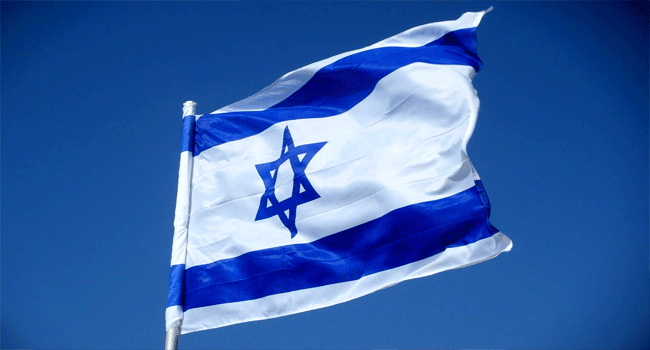Israel has reported that it launched a series of pre-emptive strikes across southern Lebanon to prevent a large-scale rocket and drone attack by Hezbollah.
According to the Israeli military, jets destroyed thousands of rocket launchers belonging to the Iran-backed armed group on Sunday morning.
Hezbollah and its ally Amal reported that three of their fighters were killed in the strikes.
Despite the strikes, Hezbollah claimed to have successfully fired 320 rockets and drones at Israel in retaliation for the assassination of a senior commander.
Israel’s military confirmed that an Israeli navy soldier was killed in the attack.
The United States has stated that it is working to prevent any further escalation after 10 months of hostilities, which have heightened concerns about the possibility of a full-scale war.
Since the conflict between Israel and Hamas in Gaza began on October 7, there have been near-daily exchanges of fire along the Israel-Lebanon border.
The latest round of US-backed peace talks in Cairo regarding Gaza ended without a breakthrough. Before leaving, Hamas rejected new Israeli conditions and accused Israel of reneging on previous commitments.
Israel, however, denies altering its demands since the previous round of talks in early July.
Hezbollah has asserted that it is acting in support of the Palestinian group Hamas, which is also supported by Iran. Both Hezbollah and Hamas are designated as terrorist organizations by Israel, the UK, and other countries.
Since October, Lebanon’s health ministry has reported more than 560 deaths, with the vast majority being Hezbollah fighters. Meanwhile, Israeli authorities have reported the deaths of 26 civilians and 23 soldiers.
The United Nations has reported that nearly 200,000 people have been displaced on both sides of the border.
Israel’s pre-dawn attack on Hezbollah at around 04:30 (01:30 GMT) on Sunday was its largest since the 2006 full-scale war between the two.
The Israel Defense Forces (IDF) stated that approximately 100 fighter jets “struck and destroyed thousands of Hezbollah rocket launcher barrels” in over 40 locations across southern Lebanon.
The strikes were launched after the IDF detected “extensive preparation” for a large-scale aerial assault by Hezbollah, according to IDF spokesman Rear Admiral Daniel Hagari.
Lebanon’s state-run National News Agency reported that Israeli aircraft targeted Beaufort Castle, the Bir Kalb area, and the outskirts of the towns of Ain Qana, Kfar Fila, Louaizeh, Bsalia, Kfar Melki, Sajd, and Sarba.
A resident of Zibqeen described the situation as feeling “like the apocalypse.”
The Lebanese ministry of public health reported that one person was killed in a drone strike on a car in Khiam. The Amal movement confirmed that one of its fighters from the village was killed.
The ministry also reported that an Israeli attack on the village of Tiri resulted in two deaths. Hezbollah confirmed the deaths of two fighters from nearby Haris but did not provide further details.
“What happened today is not the end of the story,” Israeli Prime Minister Benjamin Netanyahu told a cabinet meeting.
As well as destroying short-range rockets, Mr Netanyahu said, the IDF intercepted all of the drones which Hezbollah had “launched at a strategic target in the centre of the country”.
“[Sheikh Hassan] Nasrallah in Beirut and [Ayatollah Ali] Khamenei in Tehran need to know that this is an additional step in changing the situation in the north,” he warned the leaders of Hezbollah and Iran.
Foreign Minister Israel Katz said he had told dozens of his counterparts worldwide that Israel did “not seek a full-scale war” but would “do whatever it takes to protect our citizens”.
Shortly after the Israeli strikes, Hezbollah announced that it had targeted 11 Israeli military facilities in Israel and the occupied Golan Heights with more than 320 Katyusha rockets.
Hezbollah described the barrage as a response to the assassination of senior military commander Fuad Shukr, who was killed in an Israeli strike in Beirut on July 30.
The group claimed that the operation had been “completed and accomplished,” dismissing Israel’s statements that its Sunday strikes had thwarted a larger attack as “empty.”
Video footage captured explosions in the sky as the incoming rockets were intercepted by the Iron Dome air defense system.
Later, the IDF reported that an Israeli Navy soldier had died “during combat in northern Israel,” without providing further details.
Israeli media suggested that the soldier was killed in an incident involving a Hezbollah drone and an Iron Dome interceptor near a Dvora patrol boat, approximately 4km from the Lebanese border.
In a televised address on Sunday evening, Hezbollah leader Hassan Nasrallah stated that the group had targeted a military intelligence base about 110km (68 miles) inside Israeli territory, just 1.5km (0.9 miles) from Tel Aviv.
Nasrallah asserted that Hezbollah had successfully carried out its attack as planned, with all drones entering Israeli airspace as intended, according to a Reuters translation.
He warned that Hezbollah would respond again if the results of their operation were not deemed sufficient.
Lebanese Prime Minister Najib Mikati – whose government has little influence over Hezbollah – said he was “holding a series of contacts with Lebanon’s friends to stop the escalation”.
He called for a halt to the “Israeli aggression” and the implementation of the UN Security Council resolution which ended the 2006 war.
Mr Mikati also emphasised Lebanon’s support for international efforts to broker a Gaza ceasefire and hostage release deal between Israel and Hamas.
The White House national security adviser, Jake Sullivan, said the hope was that the latest fighting would not lead to a regional war.
The US sees an agreement as key to de-escalating tensions along the Israel-Lebanon border because Hezbollah has said it will only stop the hostilities once the fighting in Gaza ends.


